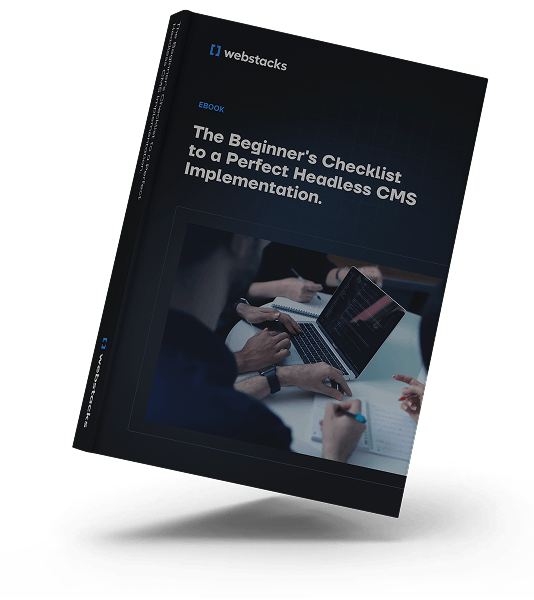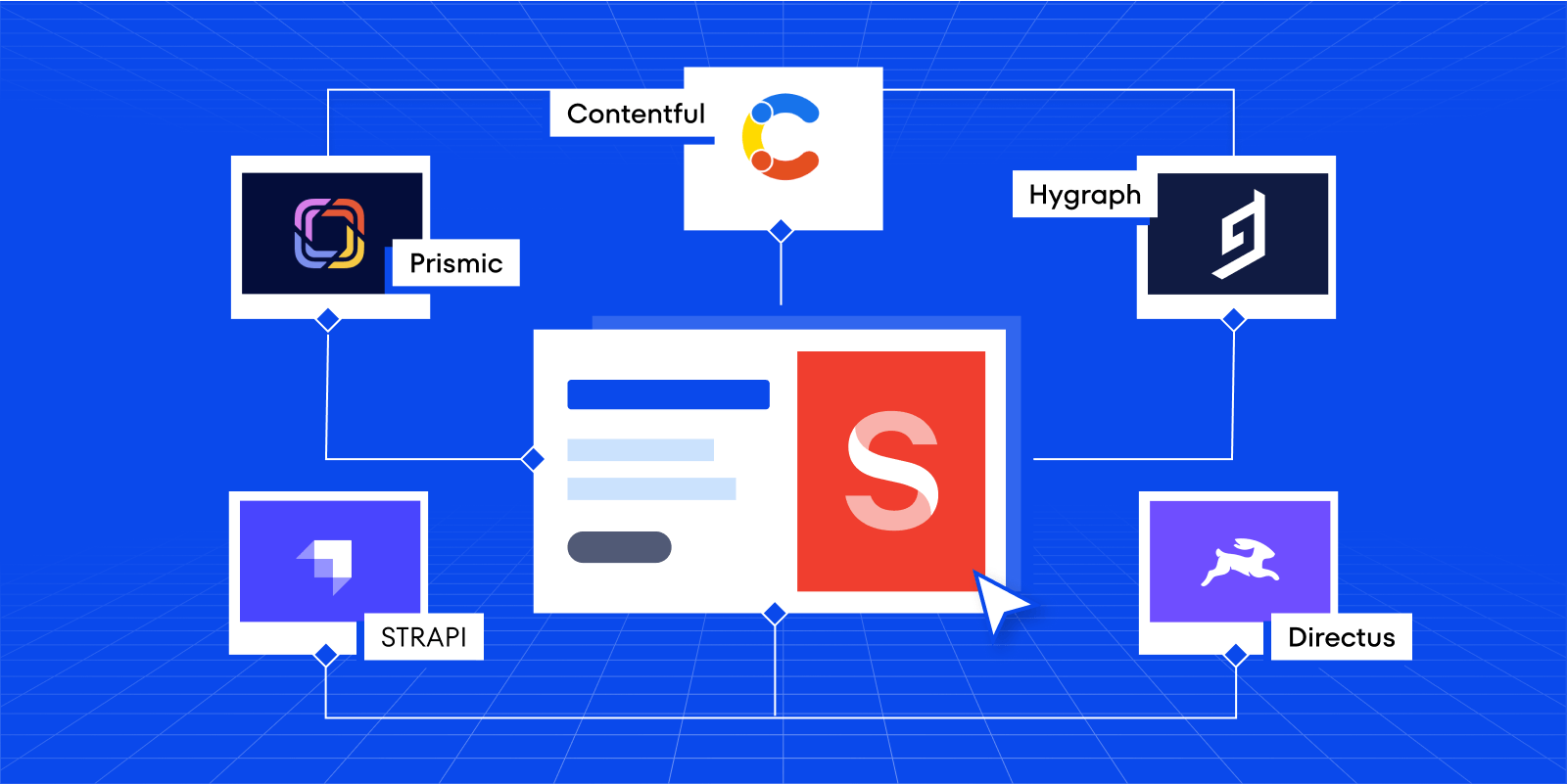The headless content management system (CMS) your organization uses significantly influences your digital success. While Sanity has been a go-to choice for many, there could be alternatives that align more closely with your enterprise's specific needs, developer preferences, or budget considerations.
This article explores key considerations and potential options when seeking alternatives to Sanity in 2025.
In brief:
- Identifying a CMS that fits your organization's needs involves evaluating factors like scalability, customization, and developer experience.
- Enterprise-level CMS alternatives offer advanced features such as robust APIs, flexible content modeling, and multi-environment support.
- Developer-friendly platforms emphasize customization, open-source flexibility, and modern technologies like GraphQL.
- Cost-effective CMS options range from free open-source solutions to budget-friendly commercial platforms, each with trade-offs in terms of features and management overhead.

Top Sanity Alternatives for Enterprise Organizations
For enterprise deployment, select a headless CMS that combines advanced technical capabilities with reliable scalability. Here are our suggestions:
Contentful: Enterprise-Scale Content Infrastructure
Contentful stands out as a powerful enterprise solution with its API-first approach and comprehensive content infrastructure.
The platform's architecture supports complex content modeling with a user-friendly interface that bridges the gap between technical and non-technical teams.
Technical capabilities include:
- Robust API for content delivery and management
- Advanced content modeling with rich relationships
- Multi-environment support for development workflows
- Built-in localization features for global deployments
For enterprise deployments, Contentful offers sophisticated user management with granular permissions and roles. Their enterprise pricing starts at $489 per month, scaling based on usage, API calls, and additional features. The platform's integration ecosystem supports major frameworks and tools, making it particularly suitable for organizations with complex technical requirements.
Strapi: Customizable Open-Source Solution
Strapi provides enterprises with an open-source alternative that allows for complete control over the infrastructure and codebase. This self-hosted solution delivers flexibility alongside enterprise-grade security and scalability.
Key enterprise features include:
- Customizable admin panel and API structure
- Support for both REST and GraphQL APIs
- Extensive plugin system for functionality extension
- Self-hosted deployment options for enhanced security
The platform's technical architecture allows for a high level of customization, making it ideal for enterprises with specific requirements or compliance needs. While Strapi is free for self-hosted versions, enterprise plans include additional features such as SSO, role-based access control, and priority support.
Hygraph (formerly GraphCMS): GraphQL-Native Enterprise Platform
Hygraph positions itself as a content platform built specifically for enterprise-grade GraphQL implementations. Its architecture focuses on delivering high-performance content across multiple channels while maintaining robust security measures.
Enterprise capabilities include:
- Advanced workflow management tools
- Content federation and unification features
- Secure content delivery infrastructure
- Real-time content updates and collaboration
The platform offers three distinct pricing tiers:
- Community: Free for basic projects
- Professional: $399/month for growing teams
- Scale: $899/month for larger implementations
- Enterprise: Custom pricing for full-scale deployments
Hygraph's technical infrastructure excels in content modeling, providing a user-friendly interface for creating complex content structures. The platform's GraphQL-native approach allows for efficient data retrieval and manipulation, particularly beneficial for enterprises managing large-scale content operations.
The integration ecosystem supports various frameworks and tools, though some users report that certain essential features might require additional development effort or third-party integrations. Performance considerations include robust caching mechanisms and content delivery optimization, though complex queries may require careful optimization to maintain optimal performance.
Developer-Friendly Sanity Alternatives
For developers, the experience and technical flexibility of a CMS are crucial factors.
Hygraph, Contentful, and Strapi are all enterprise options that are developer-friendly, too.
In addition to these three options, also consider a fourth option, Directus.
Directus: Schema Flexibility
Directus offers developers the ability to work directly with custom database schemas while providing a powerful API layer. It's particularly strong for projects requiring specific database architectures or custom data models.
Technical highlights:
- Custom database schema support
- Real-time API capabilities
- REST and GraphQL API options
- Database-first approach
- Extensible through hooks and extensions
Cost-Effective Sanity Alternatives
When evaluating alternatives to Sanity, several platforms offer compelling value propositions across different price points. Let's break down the most cost-effective options.
Free and Open-Source Solutions
For teams with technical expertise and infrastructure capabilities, self-hosted open-source solutions provide the most cost-effective approach.
Strapi leads this category, offering a feature-rich platform with complete customization freedom. It includes RESTful and GraphQL APIs, along with a plugin system for extending functionality—all without direct CMS costs.
Similarly, Directus provides a self-hosted option with real-time API capabilities and custom database schemas.
Budget-Friendly Commercial Options
For teams seeking managed solutions with lower entry costs, several platforms stand out:
- Prismic starts at just $7 per month, offering a visual editor and reusable content components through their slice system
- Agility CMS begins at $49 monthly, providing a hybrid approach with traditional CMS features and headless capabilities
- Hygraph (formerly GraphCMS) offers a free community tier and professional plans starting at $399 monthly for scaling needs
Enterprise Value Propositions
While some alternatives like Contentful start at higher price points, they justify their cost through:
- Extensive integration ecosystems
- Robust API infrastructure
- Advanced localization features
- Enterprise-grade support
- Comprehensive development tools
When calculating total cost of ownership, consider these factors:
- Infrastructure costs for self-hosted solutions
- Development time and resources required
- Scaling requirements as your content grows
- Team training and onboarding needs
- Integration capabilities with existing tools
The most cost-effective choice depends on your needs and resources—while self-hosted solutions like Strapi minimize direct costs, they require technical expertise and infrastructure management. Conversely, managed solutions like Prismic or Agility CMS might offer better value when considering total ownership costs, despite higher monthly fees.
Take Your Time to Find the Best Alternative
The Sanity alternative you choose significantly influences your content strategy and technical operations. Don't rush when evaluating factors like technical requirements, budget, team expertise, and integration needs. This is precisely what will help you find the platform that works best with your organization.
If you’re implementing a headless CMS for the first time, make sure to download our implementation checklist that will guide you throughout the process.





